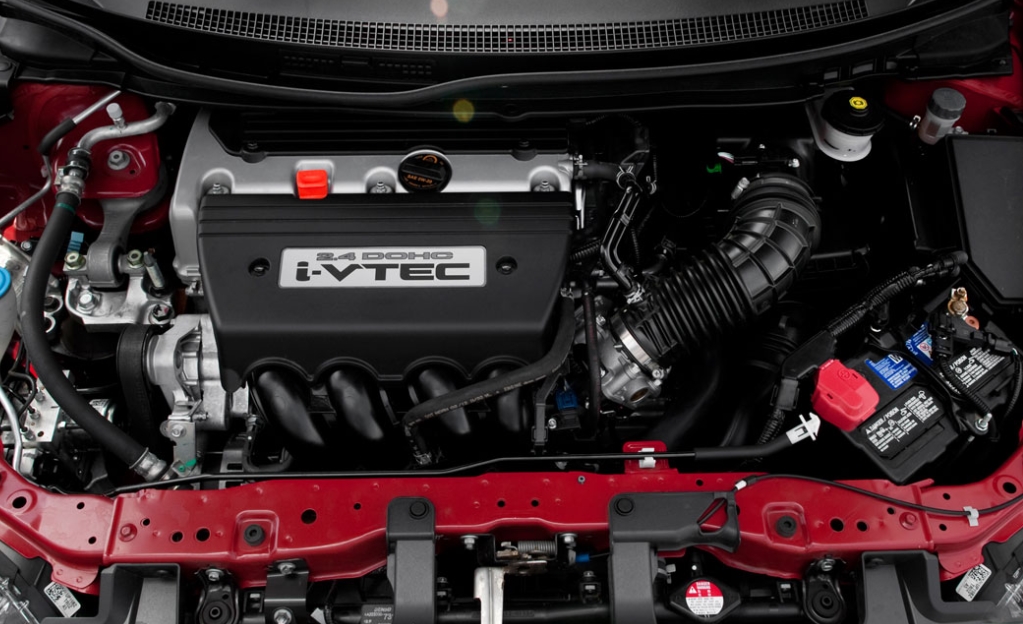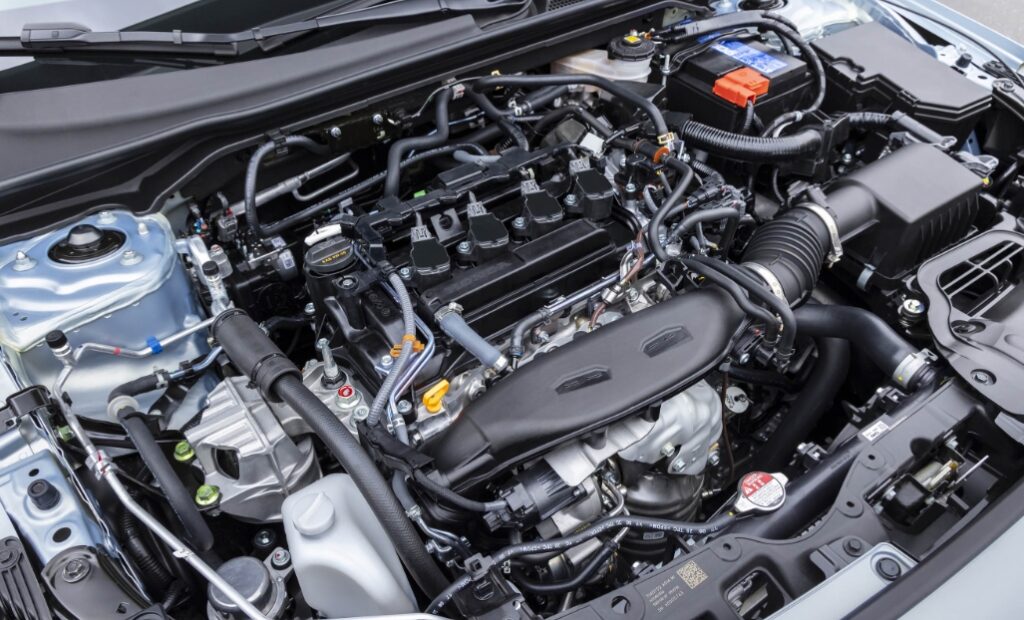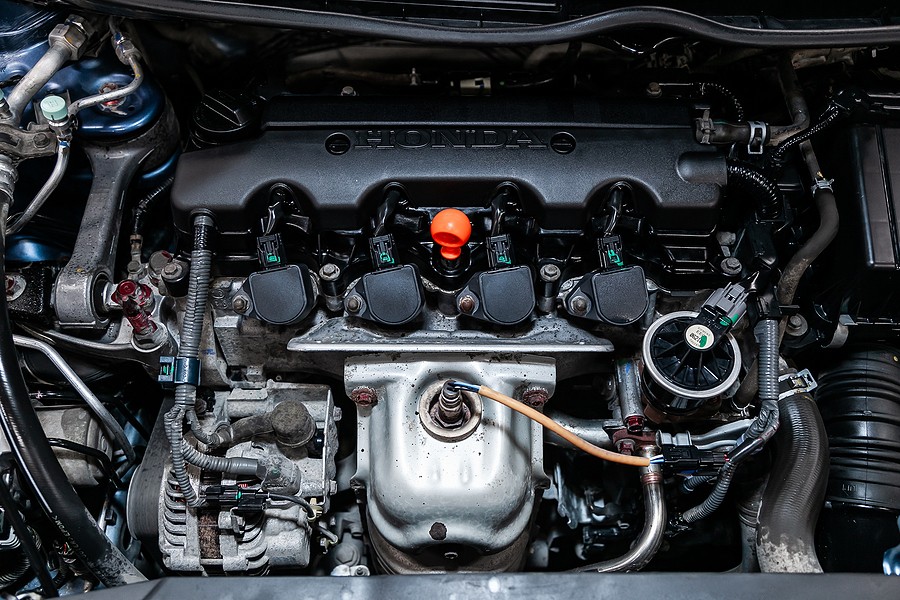The 2025 Honda Civic: Navigating The Oil Change Maze
By admin / April 18, 2024 / No Comments / 2025

The 2025 Honda Civic: Navigating the Oil Change Maze
The Honda Civic, a perennial favorite for its reliability, efficiency, and sporty handling, is poised to continue its reign in 2025. But amidst the excitement of the new model year, a question lingers: how much oil does the 2025 Honda Civic need? This seemingly simple query can lead to a complex journey through engine types, maintenance schedules, and the ever-evolving landscape of automotive technology.
Deciphering the Engine Options:
The 2025 Honda Civic is expected to offer a range of engine options, each with its own unique oil capacity. Understanding these differences is crucial for ensuring proper maintenance and maximizing engine performance.
1. The Naturally Aspirated Powerhouse:
The base engine, likely a 2.0-liter naturally aspirated four-cylinder, will be the workhorse of the Civic lineup. This engine, known for its fuel efficiency and smooth operation, is expected to hold approximately 4.2 quarts of oil. This figure may vary slightly depending on the specific transmission and other factors, but it serves as a reliable starting point.
2. The Turbocharged Thrill Seeker:
For those seeking a bit more power and excitement, the 1.5-liter turbocharged four-cylinder engine will be available. This engine, known for its impressive power output and responsive throttle, is expected to require slightly more oil, around 4.5 quarts. The additional volume is attributed to the turbocharger’s oil requirements, which add to the overall system’s needs.
3. The Hybrid Efficiency Champion:
The Civic Hybrid, a popular choice for eco-conscious drivers, will likely feature a combination of a gasoline engine and an electric motor. While the specific oil capacity for this hybrid system remains to be confirmed, it is expected to be similar to the naturally aspirated engine, around 4.2 quarts. This is due to the hybrid system’s reliance on a smaller, more efficient gasoline engine.
Beyond the Basics: Factors Influencing Oil Capacity
The oil capacity figures mentioned above are just the starting point. Several other factors can affect the actual amount of oil your 2025 Honda Civic requires, making it essential to consult your owner’s manual for precise information.
1. Engine Modifications:
If you’ve made modifications to your Civic’s engine, such as adding a performance air intake or exhaust system, it’s crucial to consult with a qualified mechanic to determine the appropriate oil capacity. These modifications can alter the engine’s internal volume and oil flow, potentially requiring adjustments to the oil level.
2. Oil Type and Viscosity:
The type and viscosity of oil used can also influence the overall capacity. Honda recommends using specific oil types and viscosities for optimal performance and longevity. Deviations from these recommendations can lead to reduced engine efficiency and increased wear.
3. Oil Change Intervals:
The frequency of oil changes plays a vital role in maintaining engine health. Honda recommends oil changes every 5,000 miles or 6 months, whichever comes first. Adhering to this schedule ensures that the oil remains clean and effective, preventing excessive buildup of contaminants and wear.
4. Oil Consumption:
Some engines, especially those with higher mileage, may experience slight oil consumption. This is a natural process that occurs as the engine components wear down. However, excessive oil consumption can indicate a potential problem that needs to be addressed. Regularly checking the oil level is essential for identifying and resolving any issues before they escalate.
Navigating the Oil Change Process:
Changing the oil in your 2025 Honda Civic is a relatively straightforward process, but it’s essential to follow the correct procedures to ensure proper maintenance and avoid potential damage.
1. Gathering the Necessary Supplies:
Before you begin, gather the following supplies:
- New oil: Refer to your owner’s manual for the recommended type and viscosity. Honda typically recommends using their own branded oil, but other high-quality synthetic oils are also suitable.
- Oil filter: Choose a filter specifically designed for your 2025 Honda Civic engine. Using the wrong filter can lead to improper filtration and potential damage.
- Oil drain pan: A large enough pan to catch the used oil is essential.
- Wrench: A wrench that fits the oil drain plug is necessary to loosen and remove the plug.
- New oil filter wrench: This tool is required to remove the old oil filter.
- Protective gear: Gloves, eye protection, and old clothes are recommended to protect yourself from oil spills and messes.
2. Preparing the Vehicle:
- Warm up the engine: Running the engine for a few minutes allows the oil to become thinner and flow more freely, making it easier to drain.
- Park on a level surface: Ensuring the vehicle is parked on a level surface prevents oil from spilling unevenly.
- Engage the parking brake: This prevents the vehicle from rolling while you’re working under it.
3. Draining the Old Oil:
- Locate the oil drain plug: It is typically located on the bottom of the engine, near the oil pan.
- Place the drain pan beneath the plug: Ensure the pan is positioned correctly to catch the draining oil.
- Loosen the drain plug: Use the wrench to loosen the plug, but do not remove it completely.
- Remove the drain plug: Once the plug is loosened, remove it completely, allowing the old oil to drain into the pan.
- Tighten the drain plug: After the oil has drained, re-install the drain plug and tighten it securely.
4. Replacing the Oil Filter:
- Locate the oil filter: It is typically located on the side of the engine, near the oil pan.
- Loosen the old filter: Use the oil filter wrench to loosen the filter. Be careful not to damage the filter housing.
- Remove the old filter: Once the filter is loosened, remove it completely.
- Install the new filter: Apply a thin layer of oil to the gasket of the new filter before screwing it onto the housing. Tighten the filter by hand until it is snug.
5. Adding New Oil:
- Locate the oil fill cap: It is typically located on the top of the engine, near the valve cover.
- Remove the fill cap: Remove the cap and set it aside.
- Add new oil: Slowly pour the recommended amount of new oil into the engine. Refer to your owner’s manual for the exact capacity.
- Check the oil level: After adding the oil, check the dipstick to ensure the level is within the recommended range. If necessary, add more oil until the level is correct.
6. Clean Up and Final Inspection:
- Clean up any spills: Use rags or absorbent materials to clean up any oil spills.
- Dispose of the used oil and filter properly: Do not pour used oil down the drain or dispose of it in the trash. Check with your local municipality for proper disposal options.
- Start the engine: Start the engine and let it idle for a few minutes.
- Check for leaks: Inspect the engine for any signs of oil leaks. If you notice any leaks, stop the engine and address the issue immediately.
Beyond the Oil Change: Maintaining Engine Health
While regular oil changes are essential for maintaining engine health, other factors also play a crucial role. Here are some additional tips to ensure your 2025 Honda Civic engine runs smoothly for years to come:
- Use high-quality oil: Choosing a reputable oil brand and following the recommended viscosity is crucial for optimal lubrication and protection.
- Adhere to maintenance schedules: Regularly scheduled maintenance, including oil changes, air filter replacements, and spark plug checks, helps prevent premature wear and tear.
- Avoid aggressive driving: Excessive acceleration and hard braking can increase engine wear and oil consumption.
- Monitor oil level regularly: Check the oil level regularly and top it off as needed.
- Listen for unusual noises: If you hear any unusual noises coming from the engine, such as knocking, rattling, or grinding, have it inspected by a qualified mechanic immediately.
Conclusion:
Navigating the oil change maze for your 2025 Honda Civic requires a combination of understanding the engine options, consulting the owner’s manual for precise information, and following proper maintenance procedures. By taking the time to learn about these factors and adhering to the recommendations, you can ensure that your Civic’s engine runs smoothly and efficiently for years to come. Remember, a well-maintained engine not only provides optimal performance but also contributes to the vehicle’s longevity and overall value.







